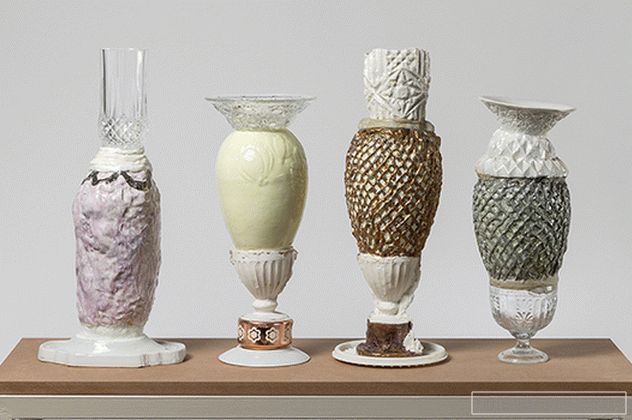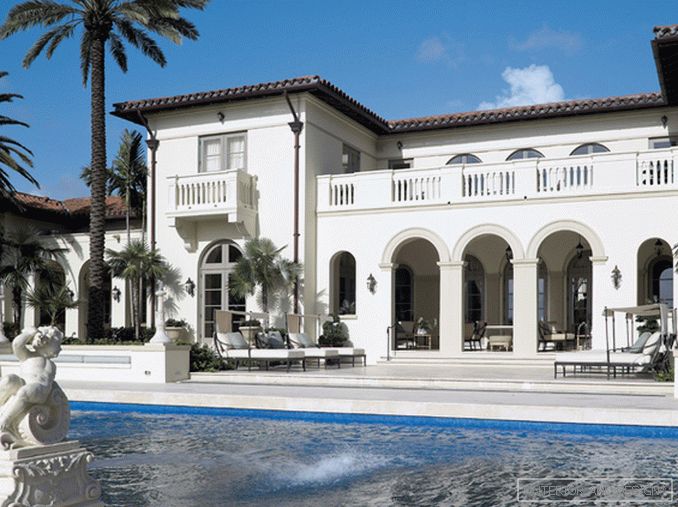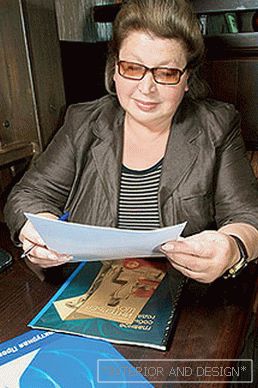Dutch design is distinguished by ingenious simplicity, experimentalism and ... humor. Furniture and carpets made from recycled pine needles or a pistol that shoots icy tears at the offender are recent examples when the industrial designer thinks in a modern, figurative and very Dutch way.
Related: 3D Printing: Printed House
Bright, impractical, at the same time thoughtful, intelligent Dutch Design is simple and powerful. Economical ethical Dutch skillfully apply materials that look useless. They know how to modernize cultural codes, believe in the prospects of a tolerant society, and combine everything that is never combined. Banal and extraordinary, old and new, high-tech and handicraft.
Own business
Dutch designers - darlings of fate. Compatriots take their ventures so seriously that they are willing to pay big money for stools from old boards and tables with porcelain toads. Officials subsidize startups, and spacious workshops give or give in a symbolic lease.
Dutch design finds its buyer not through an intermediary manufacturer, but in galleries, at auctions and on the Internet - just like art, making a bet on small circulation. The Dutch make revolutionary furniture in their own workshops. To this day, there is no furniture industry in the Kingdom of the Netherlands, and this has become an excellent advantage - the product is made solely at the sole discretion of the designer. Of course, government support plays a huge role. The Foundation of Visual Arts, Design and Architecture and its programs, launched in 1988, stimulate more than one generation of students to become independent entrepreneurs immediately after graduation. Concentrate efforts on your own business, without changing the scope of activities.
Export of intelligence
The Netherlands is one of the most economically sustainable countries. It closes the top ten richest countries in the world. Here society is not polarized in terms of income, and the Dutch export-oriented economy is called the economy of knowledge and innovation. The concept of economic development today is based on three pillars and three ports: Amsterdam / airport (airport), Rotterdam / sea port (seaport), Eindhoven / brain-port (intellectual gate of the country). A new cluster of creative industries formed around Eindhoven includes 10,000 participants, 125 companies and institutions. It generates over 25 billion euros of Dutch exports. Five years ago, Brainport was named the “smartest region of the world.”
Educated class
В Нидерландах — 13 школ дизайна. Маленькую европейскую страну (население Нидерландов — 15 млн человек) можно смело назвать страной архитекторов и дизайнеров. У хорошо системно образованных профи всегда есть применение: дизайн стал неотъемлемой частью разработки любых продуктов в Нидерландах — от банкнот до кораблей. Мода, компьютерные технологии, коммуникации и даже еда раздвинули без того широкие рамки профессии. События на стыке перспективных дисциплин создают такие мировые звезды, как архитектор Рэм Колхас, фэшн-дизайнер Айрис ван Херпен, пионер «дизайна еды» Мари Фогельзанг, скульптор-кинетик Тео Янсен, художники-провокаторы Юп Ван Лисхаут, Дан Роехарде, Лукас Маассен, исследователи Надин Стерк и Лонни ван Рисвик (Atelier NL). Они высказывают идеи «редизайна стиля жизни», выступают как политики и социологи, размышляя о власти, развитии, смерти. Десять брендов: Марсель Вандерс, Йорис Лаарман, Пит Хейн Эйк, Мартен Баас, Studio Job, Кики ван Эйк и Юст ван Блейзвик, Scholten & Bejing, Ричард Хаттен, Бертьян Пот, Хэлла Йонгериус возглавляют пирамиду самых востребованных промдизайнеров страны.
Living in the future, rethinking the past
If Scandinavian design embodies pure functionality, then Dutch is its freedom-loving cousin-rebel. As a phenomenon of world culture, it appeared on the world scene a century ago, thanks to the innovative activities of Gerrit Rietveld and the modernist movement De Stijl: together with Theo van Dusburg and Pete Mondrian Rietveld developed a new visual "language": abstraction and geometric order were to be the expression of modern ideas.
Related: 100 Years of De Stijl: 8 Facts About the House of Trus Schroeder
The term Dutch Design has become popular since the 1990s. Prior to this, the phrase "Dutch design" caused associations with the work of graphs. A major breakthrough in industrial design was associated with such an association as Droog, and his performance at Salone del Mobile in 1993. The names of Gis Bakker, Renny Remakers, Jurgen Bey, Richard Hatten, Hella Jongerius, Vicky Somers, Pete Hein Eyck and Marcel Wanders, who founded Moooi in 1996, became known to the world.
“We at Moooi are not trying to present ourselves as some kind of personification of everything new,” says Wanders. - Since the days of modernism, it is considered to be a good tone to focus only on the future, on the new. It seems to me that this does not happen, it is simply ridiculous - to assume that you are free from the influence of the past. That someone is free from him at all. Putting the blinders on, rushing forward without looking around is really funny. We do not do that ... Fill new objects with well-read cultural metaphors and implement them either by tradition or with the help of new techniques - I do this every day.
DDW 2017 Ambassadors: Winy Maas (MVRDV), Lonnie van Risvik and Nadine Sterk (Atelier NL), the chief editor of the Dezeen portal Marcus Fairs.The Academy of Design in Eindhoven (in 2017 it will be 70 years old) has become the main forge of stars. Although it was founded entirely for another: in 1946, the municipality was ordered to train personnel for the local industry, namely, for the city-forming enterprises of Philips, which left Eindhoven together with its headquarters in 1997. Students were novice practitioners in a closed "laboratory", which formed not the stars of world design, but the modest laborers of the Dutch electronic corporation. (Now the main industry in Eindhoven is microchip production - several offices managing production).
The reputation of the best design academy of our time, open to the world, is largely due to the former head of the Academy, Lee Edelkoort (Lidewij Edelkoort). An authoritative trend setter, an “archeologist of the future,” she has made serious reforms in the institution for 10 years (1999–2009). Lee has been active in graduate careers, promoting such authors as Martin Baas, Kiki van Eyck and Studio Job in the context of global trends.
“Luxury items are not necessarily expensive materials, handmade or exclusive brands. They can be made from the simplest things and simple means, because luxury is a rich imagination. " Renny Remakers
Technology and craft
Dutch designers are actively using technology. 3D printing and robotics inspire Joris Laarman and Dirk Vander Kooiya. Vander Kooi turned the Chinese industrial robot into a 3D printer. With his help, he printed lamps, vases and even an Endless chair from the plastic parts of an old refrigerator. “I have always been attracted to recycled synthetic materials. “I wanted to break the stereotype that only cheap short-lived things can be made of them,” comments Vander Kooi. Everything unnecessary gets into the gigantic press: “We feed the press chairs that we didn’t like, and he remakes the tables from them,” explains the designer.
The main question today is how to combine new technologies and handicraft. The high-tech plus loutee guarantee the subject a happy place in the world of ultra-fast communications and super-emancipated individuals.

Dutch designers believe that in the future the value of the object will not depend on the materials (even if it is advanced, such as bioplastics or organic LEDs) - the unique individuality of the object will be the main luxury. The design has gradually become more personal, has become a personal story. Today, people are more interested in what design can offer to anyone personally. “Dutch design is religion for some, marketing for others, and a brand that sells for export well for others,” comments Tim Vermeulen, program manager for the Dutch Design Foundation. Vermeulen sees and is wider: Dutch design is an international school on the basis of design education.


